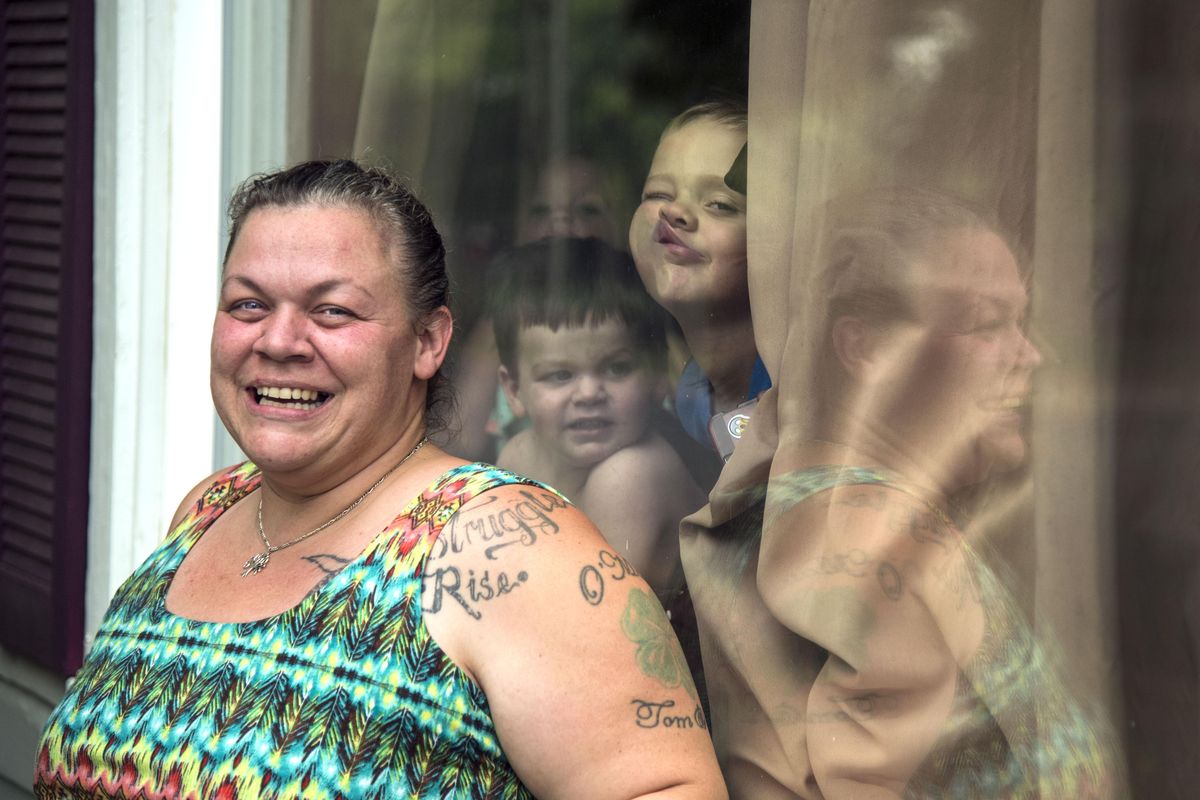One woman’s tale ties to many in growing West Central neighborhood

Hers is the story of a neighborhood.
Sabrina Ryan spent eight years in jail for nearly shooting a man. Before, and after, her time in prison she was addicted to meth – cycling in and out of sobriety. She lost her children. Lost her home. At points, she nearly lost her life.
But on a Tuesday morning in early September, Ryan, the mother of seven children, a college graduate and a proud resident of West Central has sidestepped all of that.
“This feels like where I’m supposed to be,” she said while standing on the porch of her 1902 home on Mallon Avenue.
She’s been sober for three years and works as a house cleaner. She and her husband hope to buy the home they are renting. She helps felons make the transition from incarceration to freedom.
Living in West Central, a neighborhood with a reputation for crime and drugs, puts her in a good place to make a difference.
And, in her three years living there, she’s already seen changes. Changes, she said, that mirror her own personal transformation.
“It’s changing every day. We take a vested interest in what goes on in our neighborhood,” she said. “We care. West Central cares.”
Part of the neighborhood’s appeal, for Ryan, is its diversity. There are rich, poor and middle-class households. There are recent immigrants and people who grew up in the neighborhood, all living side-by-side.
They’re drawn to West Central’s affordability, proximity to the river and downtown as well as its historic appeal.
For Jess Walter, a best-selling novelist, and a resident of West Central, the neighborhood’s diversity is a central appeal.
“I think the reason I like living in an economically mixed neighborhood is you can’t get divorced from your empathy,” Walter said. “You’re always seeing people who aren’t as well off as you are. If that doesn’t give you some sense of social responsibility,” then you have no empathy.
Walter has lived in West Central for nearly 20 years. His writing has often drawn from the scenes and people of the neighborhood.
And, like Ryan, he’s seen changes.
“It’s an undeniable fact that the neighborhood feels better,” he said.
When he first moved there, he often wished there was a nearby coffee shop or a restaurant. With the development of Kendall Yards, an up-scale condominium development, and the influx of small businesses, like Indaba and Batch Bakeshop, those things now exist.
“I just think it’s too cool of an area to not take off,” he said.
Still, there are problems. West Central’s approximate median income is $27,000. Residents’ average life expectancy was 74 years in 2012. More than 41 percent of pregnant women in West Central smoke, according to a 2012 Spokane Regional Health District study.
Kelly Cruz, the West Central neighborhood council chairman, feels that the city has neglected the neighborhood for years. He points to roads with potholes and a long-vacant stretch of railroad track left untouched. He’s hopeful about the neighborhood’s future, but he thinks it will take concentrated city investment.
“We’re at the point where we are going to need some pretty significant dollars,” he said.
“It’s starting to change,” he added. “(But) it’s not changing as fast as a lot of people would like to see it.”
Jessie Norris bought her West Central home in 1978. And, like Walter and others, she said she was blown away by the neighborhood’s amenities. Close to downtown, yet near nature. Cheap, but full of old solid homes with “good bones.”
“I feel like this neighborhood is a gem and that it has all these positive attributes,” she said. “For so long it’s just been seen as this place to avoid. I think that’s changing. As I said before, ‘What’s not to like?’”
She describes the area as a “diamond in the rough.” One that’s changing, but slowly. She hopes the city starts enforcing housing codes and penalizing absentee landlords who don’t keep properties well maintained. Those sorts of changes would improve the overall feel of the place, she said.
“It took a long time for the neighborhood to get into the shape it’s in,” she said. “That’s not going to change overnight.”
And while some of that change could come from the outside – from city dollars, stricter code enforcement and continued development of Kendall Yards – Sabrina Ryan is committed to doing what she can to make the neighborhood a better place for her children.
“It used to be like watching ‘COPS’ out of the window,” she said while staring out her front window. “Now it’s getting to be a little more like Little House on the Prairie.”